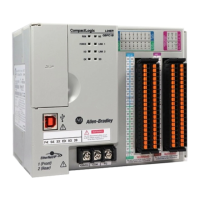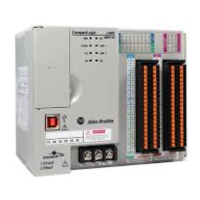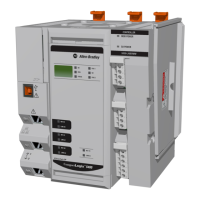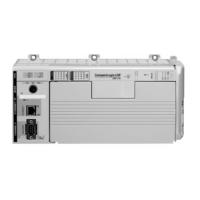16 Rockwell Automation Publication 1769-UM022C-EN-P - June 2018
Chapter 1 System Overview
Safety Application
Requirements
The Compact GuardLogix 5370 controller system is certified for use in safety
applications up to and including Safety Integrity Level (SIL) 3 and
Performance Level (PL)e, in which the de-energized state is the safe state.
Safety application requirements include evaluating probability of failure rates
(PFD and PFH), system reaction-time settings, and functional-verification
tests that fulfill SIL 3/PLe criteria.
For SIL 3 and PLe safety system requirements, including functional validation test
intervals, system reaction time, and PFD/PFH calculations, refer to the
GuardLogix 5570 and Compact GuardLogix 5370 Controller Systems Safety
Reference Manual, publication 1756-RM099
. You must read, understand, and
fulfill these requirements prior to operating a Compact GuardLogix SIL 3, PLe
safety system.
Compact GuardLogix-based SIL 3/PLe safety applications require the use of at
least one safety network number (SNN) and a safety task signature. Both affect
controller and I/O configuration and network communication.
For further details, refer to the GuardLogix 5570 and Compact GuardLogix
5370 Controller Systems Safety Reference Manual, publication 1756-RM099
.
Safety Network Number
The safety network number (SNN) must be a unique number that identifies
safety subnets. Each safety subnet that the controller uses for safety
communication must have a unique SNN. Each CIP
™ Safety device must also
be configured with the safety subnet’s SNN. The SNN can be assigned
automatically or manually.
For information on assigning the SNN, see Managing the Safety Network
Number (SNN) on page 66.
Safety Task Signature
The safety task signature consists of an ID number, date, and time that
uniquely identifies the safety portion of a project. This includes safety logic,
data, and configuration. The Compact GuardLogix system uses the safety task
signature to determine the project’s integrity and to let you verify that the
correct project is downloaded to the target controller. Creating, recording, and
verifying the safety task signature is a mandatory part of the safety-application
development process.
See Generate a Safety Task Signature
on page 160 for more information.

